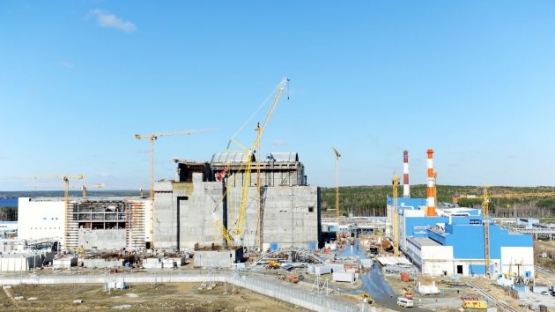Experts from Member States, the Generation IV International Forum (GIF), international organizations and the IAEA met in Vienna last week to discuss different aspects of safety for the Generation IV Sodium-Cooled Fast Reactors (SFRs) under development worldwide.
"This is the 5th meeting in a series of workshops that was initiated in 2010," said Mikhail Chudakov, IAEA Deputy Director General and Head of the Department of Nuclear Energy. "We also welcome representatives from almost all the design organizations and Member States committed to the development of innovative SFR demonstration plants and prototypes." Mr Chudakov also congratulated GIF for the work performed by the GIF Task Force on Safety Design Criteria on Generation-IV SFR.
The IAEA-GIF workshops offer a unique opportunity to exchange information on the safety of advanced SFRs and involve all Member States with an active programme on this reactor technology.
Sodium-cooled fast reactors (SFRs) have reached a high level of maturity through design, construction and operation of experimental and prototype reactors in the past decades, such as the Fast Flux Test Facility (FFTF) in USA, the small size Prototype Fast Reactor (PFR) in the United Kingdom, the prototype PHÉNIX in France, the BN-350 in Kazakhstan, the demonstration plant BN-600 in the Russian Federation, JOYO and MONJU in Japan, and the commercial size SUPERPHÉNIX in France. Two industrial-size SFRs are under commissioning: the BN-800 in the Russian Federation and the Prototype Fast Breeder Reactor (PFBR) in India.
Several countries such as China, France, India, Japan, the Republic of Korea, the Russian Federation and the United States are currently engaged in SFR development, design and construction projects. In addition, international initiatives have been established in the past years to promote cooperation among countries with development and deployment programmes on innovative SFRs.
"The IAEA provides an opportunity to also get together with countries with active SFR development programmes that are not members of GIF, such as India and Germany," said Mr Tanju Sofu from GIF, who chaired the meeting.
The GIF Task Force is finalizing its report on safety design criteria based on an extensive international review which also involved the IAEA, the OECD's Nuclear Energy Agency and some national regulators and technical support organizations. It has now begun to develop safety design guidelines for the implementation of the criteria. The focus is on the prevention and mitigation of severe accidents in SFRs, with an emphasis on the prevention due to SFRs' proven inherent safety characteristics.
Different design organizations in Member States presented their activities to apply the new safety design criteria in their individual SFR concepts. At the 2014 workshop, designers had presented the implementation of some specific safety design criteria, such as practical elimination of accident situations, and design extension conditions and sodium void reactivity effect in their particular SFR concept. This year, two sessions focussed on reactor core and fuel design featuring fuel material characteristics, and on coolant system and containment design featuring SFR characteristics.
"It is important for us to include the actual commercial reactor designers as well as the regulatory community," said GIF's Harold McFarlane. "We want to see if these guidelines will really pass muster and how they might be implemented in a practical way. In my opinion, these joint workshops are the most important collaboration between GIF and the IAEA."
The need for complete independence between regulators and technical support organizations on one side, and reactor designers and potential vendors on the other, is obvious. "But at this early stage of the GEN-IV concepts development, a dialogue between the two is necessary in order to achieve a common understanding on the general safety approach to be adopted for these innovative nuclear systems," said Mr Chudakov. "From this point of view, the Workshop remains a unique opportunity to create such a forum at the international level."
The 5th Joint IAEA-GIF Workshop on the Safety of Sodium-Cooled Fast Reactors was held at the IAEA on 23-24 June 2015. It was organized by the Nuclear Power Technology Development Section and the INPRO Section in the IAEA Department of Nuclear Energy. Experts from the IAEA Department of Nuclear Safety and Security also participated.


